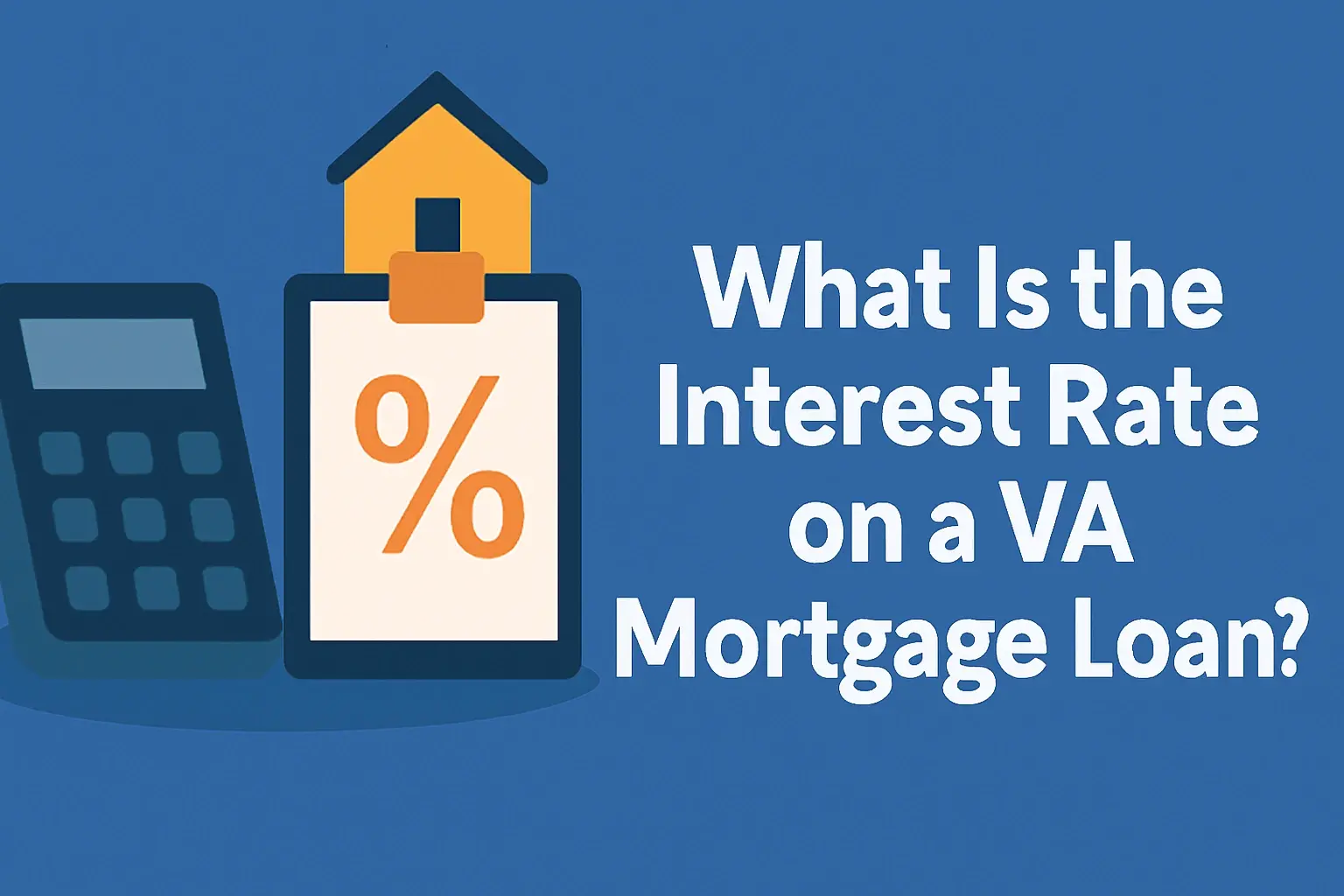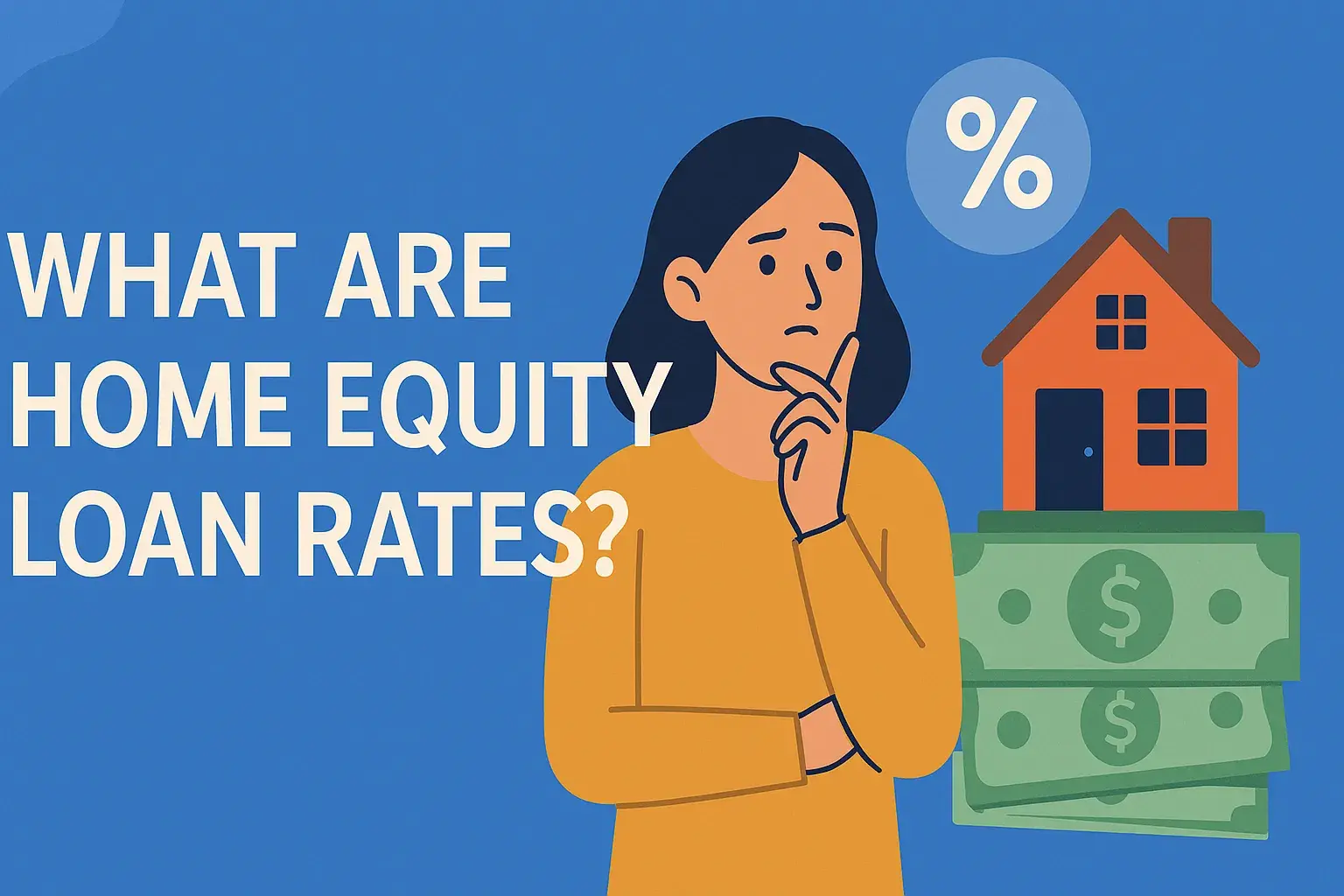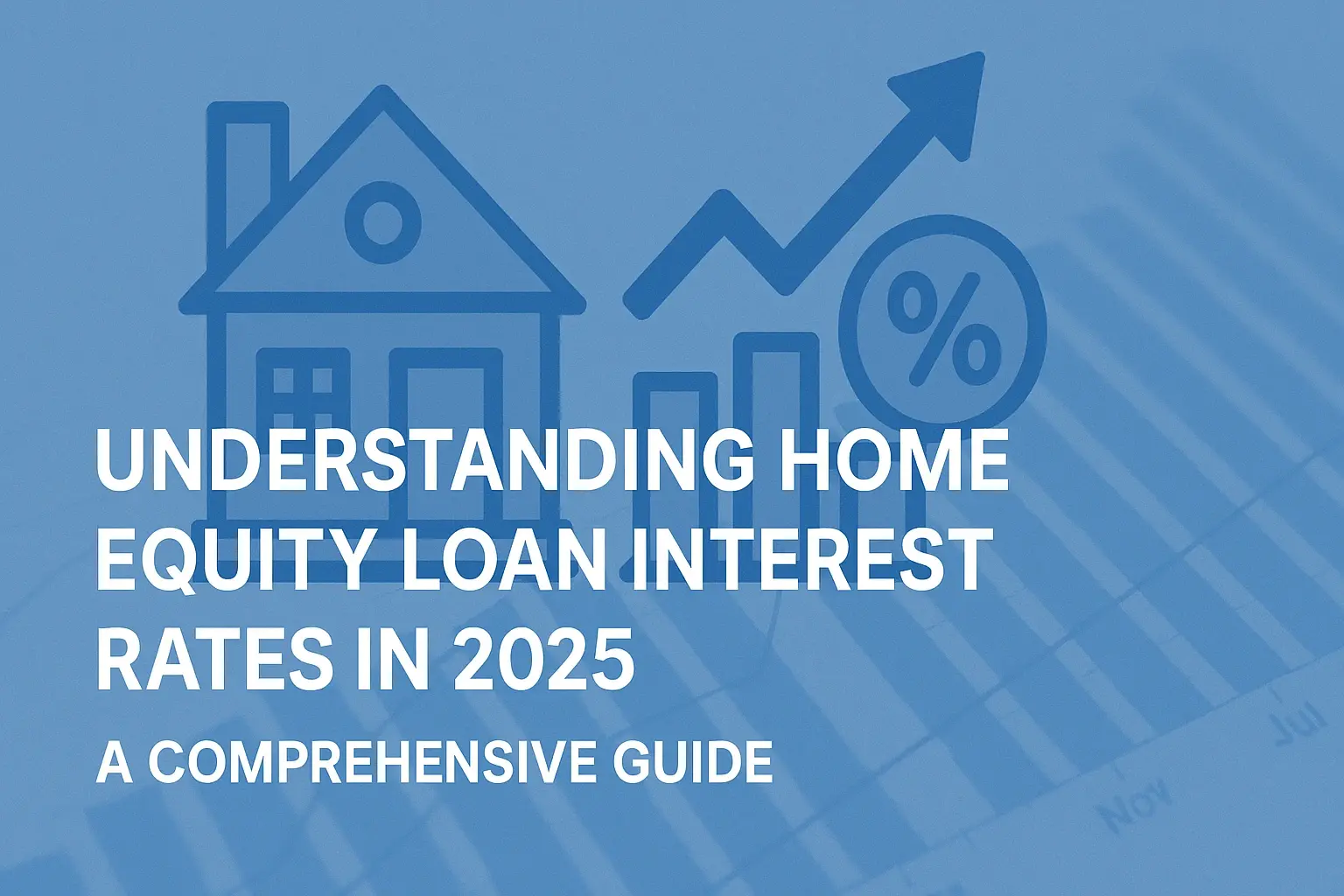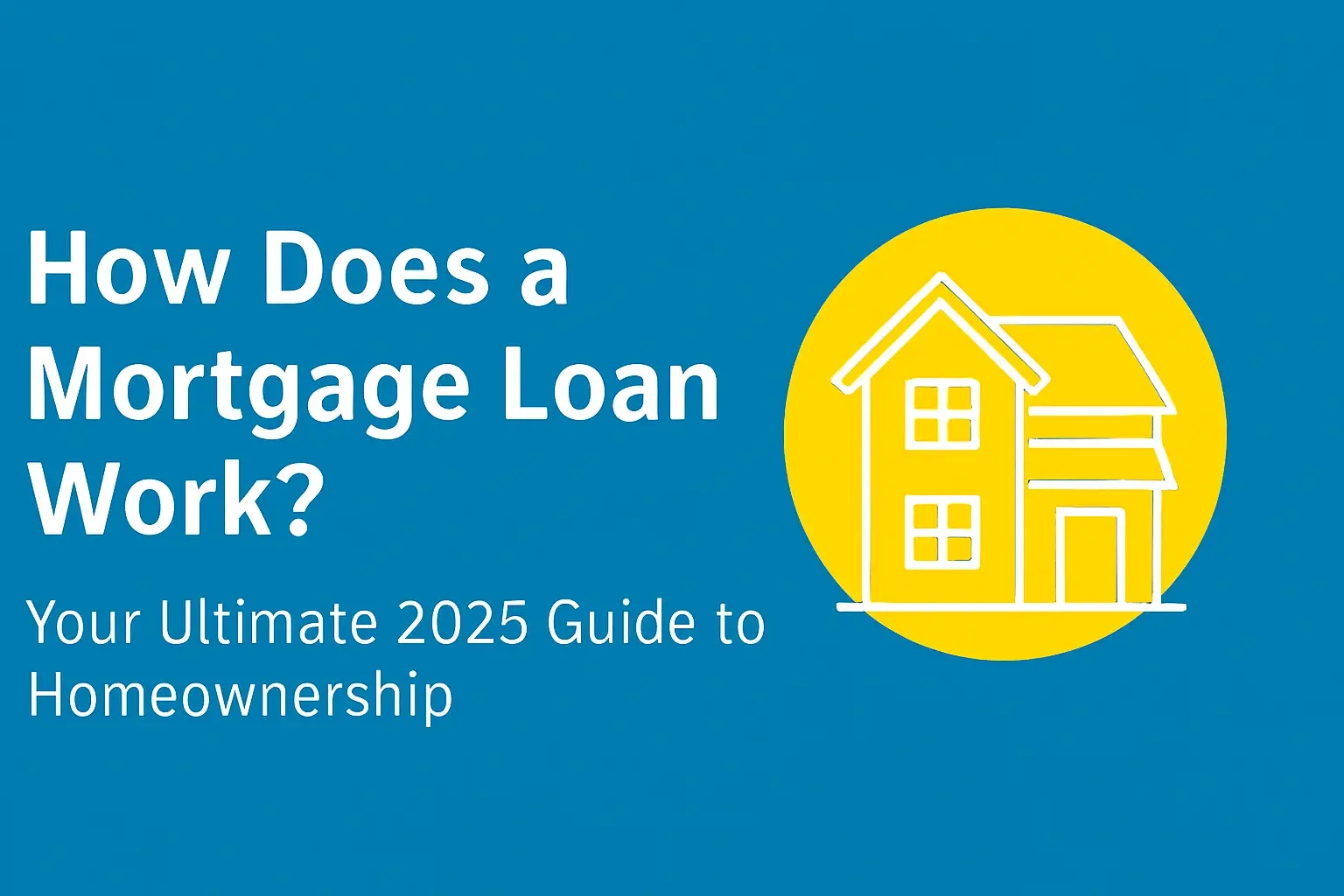-
Posted on: 23 Aug 2024

-
Understanding how much home loan you can get is the crucial first step in your homeownership journey. This comprehensive guide will demystify the process, covering all the factors lenders consider, from your income and credit score to current market conditions, ensuring you're well-prepared to secure the right mortgage.
Understanding Home Loan Eligibility
Deciding to buy a home is a significant milestone, and a primary concern for most prospective buyers is understanding their borrowing capacity. The question, "How much home loan can I get?" is at the forefront of many minds. Lenders assess your financial profile to determine the maximum loan amount they are willing to offer. This involves a thorough evaluation of your income, creditworthiness, existing debts, and the property you intend to purchase. In 2025, the landscape of mortgage lending continues to be shaped by economic conditions, lender policies, and regulatory frameworks, all of which play a role in defining your loan eligibility and the ultimate amount you can borrow for your dream home.
Key Factors Influencing Your Home Loan Amount
Several critical elements contribute to a lender's decision on how much they will lend you. Understanding these factors is paramount to accurately estimating your borrowing potential and strengthening your application. Lenders aim to mitigate risk, so every aspect of your financial life that impacts your ability to repay the loan will be scrutinized.
Income and Employment Stability
Your income is arguably the most significant determinant of your loan eligibility. Lenders want to see a consistent and reliable source of income that can comfortably cover your monthly mortgage payments, along with other living expenses. They typically look at your gross monthly income (income before taxes and deductions) and assess its stability. This includes:
- Salaried Individuals: Lenders will review your pay stubs, employment contracts, and tax returns (usually for the past two to three years) to verify your income and employment history. A stable job with a reputable employer is viewed favorably. Frequent job changes or employment gaps can raise concerns.
- Self-Employed Individuals: For those who are self-employed or run their own businesses, lenders will require more extensive documentation. This typically includes several years of tax returns, profit and loss statements, balance sheets, and bank statements. They will assess the profitability and consistency of your business income. Lenders often apply a more conservative multiplier to self-employed income to account for potential fluctuations.
- Other Income Sources: Income from rental properties, investments, or other sources can be considered, but lenders will have specific criteria for validating these. For instance, rental income might be discounted to account for vacancies and expenses.
In 2025, lenders continue to emphasize stable employment, with many requiring at least two years in the same industry or with the same employer for salaried applicants. For the self-employed, a minimum of three years of consistent business operation and profitability is often the benchmark.
Credit Score and History
Your credit score is a numerical representation of your creditworthiness, reflecting your past behavior in managing debt. A higher credit score generally translates to lower interest rates and a greater likelihood of loan approval. Lenders use credit scores to gauge the risk associated with lending to you. A good credit history demonstrates that you have a track record of paying bills on time and managing credit responsibly.
- Credit Score Ranges: While specific thresholds vary by lender and loan type, generally, scores above 700 are considered good, and scores above 740 are excellent. Scores below 620 may make it difficult to qualify for a conventional mortgage, or may result in higher interest rates and fees.
- Credit Report Review: Beyond the score, lenders will examine your credit report for details such as the types of credit you've used, the amounts you owe, the length of your credit history, and any instances of late payments, defaults, bankruptcies, or collections.
- Impact on Loan Amount: A strong credit profile not only increases your chances of approval but can also enable you to borrow more. Lenders may offer more favorable terms, including higher loan amounts, to borrowers with excellent credit because they are perceived as lower risk.
As of 2025, maintaining a credit score of 740 or higher is highly recommended to access the best mortgage rates and loan terms. Lenders are also increasingly scrutinizing credit reports for any signs of financial distress, even if the score is still within acceptable limits.
Debt-to-Income Ratio (DTI)
The Debt-to-Income ratio is a critical metric lenders use to assess your ability to manage monthly debt payments. It compares your total monthly debt obligations (including the proposed mortgage payment) to your gross monthly income. A lower DTI indicates that a smaller portion of your income is already committed to debt, leaving more capacity for a mortgage payment.
- Front-End DTI (Housing Ratio): This ratio compares your potential monthly housing expenses (principal, interest, taxes, and insurance - PITI) to your gross monthly income. Lenders often prefer this to be below 28%.
- Back-End DTI (Total Debt Ratio): This ratio compares all your monthly debt obligations (including PITI, credit card payments, auto loans, student loans, and any other recurring debts) to your gross monthly income. Most lenders have a maximum back-end DTI of around 36% to 43%, although some may go higher for borrowers with strong credit and larger down payments.
- Calculation Example: If your gross monthly income is $6,000 and your total monthly debt payments (including the estimated mortgage PITI) are $2,400, your DTI would be 40% ($2,400 / $6,000).
In 2025, regulatory bodies continue to emphasize responsible lending, making DTI a key factor. While some programs might allow higher DTIs, maintaining a DTI below 43% is generally advisable for securing a conventional loan. Some lenders might also consider a borrower's residual income (money left after all expenses) as a mitigating factor for higher DTIs.
Loan Term and Interest Rate
The length of the loan (loan term) and the interest rate significantly impact both your monthly payments and the total amount you repay over time. These factors indirectly influence how much you can borrow because they affect the affordability of monthly payments.
- Loan Term: Common loan terms are 15 and 30 years. A longer term (e.g., 30 years) results in lower monthly payments, which can allow you to qualify for a larger loan amount. However, you will pay more interest over the life of the loan. A shorter term (e.g., 15 years) has higher monthly payments but less total interest paid.
- Interest Rate: The interest rate is the cost of borrowing money. Even a small difference in interest rates can have a substantial impact on your monthly payment and the total loan amount you can afford. A lower interest rate means you can borrow more for the same monthly payment, or your monthly payment will be lower for the same loan amount. Interest rates are influenced by market conditions, your credit score, the loan type, and the lender.
In 2025, borrowers are advised to shop around for the best interest rates, as even a quarter-point difference can save thousands of dollars over the loan's life. Understanding the trade-offs between loan terms and interest rates is crucial for maximizing your borrowing power while ensuring affordability.
Down Payment Size
Your down payment is the portion of the home's purchase price that you pay upfront in cash. A larger down payment has a direct impact on the loan amount you need and can significantly improve your borrowing capacity and loan terms.
- Loan-to-Value Ratio (LTV): Lenders use the LTV ratio, which compares the loan amount to the home's appraised value. A larger down payment results in a lower LTV. For example, a $20,000 down payment on a $200,000 home results in an LTV of 90%.
- Impact on Loan Amount: A larger down payment means you need to borrow less, which can make it easier to qualify for the loan. It also reduces the lender's risk, potentially leading to better interest rates and the avoidance of Private Mortgage Insurance (PMI) for conventional loans if your LTV is 80% or lower.
- FHA Loans: These government-backed loans allow for down payments as low as 3.5% for borrowers with a credit score of 580 or higher, making homeownership more accessible.
In 2025, while low down payment options remain available, a down payment of 20% or more is still the gold standard for avoiding PMI and securing the most favorable loan terms on conventional mortgages. Lenders are also increasingly offering specialized programs for first-time homebuyers that may have reduced down payment requirements.
Property Value and Lender Policies
The value of the property you intend to purchase and the specific policies of the lending institution also play a role in determining the maximum loan amount.
- Appraisal Value: Lenders will require an appraisal of the property to determine its fair market value. The loan amount is typically based on the lower of the purchase price or the appraised value.
- Loan Limits: Lenders have maximum loan limits, often dictated by government-sponsored enterprises like Fannie Mae and Freddie Mac. These limits vary by location and are adjusted annually. In 2025, these conforming loan limits are set by the Federal Housing Finance Agency (FHFA) and are higher in high-cost areas. Loans exceeding these limits are considered jumbo loans, which may have stricter qualification requirements and higher interest rates.
- Lender-Specific Guidelines: Each lender has its own underwriting guidelines and risk tolerance. Some lenders may be more conservative, while others might be willing to lend a higher percentage of the property's value or approve loans with slightly higher DTIs, especially for borrowers with strong overall financial profiles.
In 2025, understanding the conforming loan limits for your specific region is crucial. For instance, the FHFA announced increased conforming loan limits for 2025, which can impact how much buyers can borrow in many areas. Researching lenders and understanding their specific policies can help you identify those most likely to approve your desired loan amount.
Age and Co-Applicant Status
While age itself isn't a direct disqualifier, it can influence loan terms, especially concerning the loan's repayment period. The presence of a co-applicant can significantly impact the total loan amount you can secure.
- Age: Lenders consider the borrower's age in relation to the loan term. For example, a borrower nearing retirement age might face scrutiny if applying for a very long loan term, as it could extend beyond their expected working years. However, this is generally not a major hurdle for most borrowers.
- Co-Applicant: If you apply for a mortgage with a co-applicant (e.g., a spouse or partner), the lender will consider both individuals' income, credit history, and debt obligations. This can substantially increase the combined borrowing capacity, allowing you to qualify for a larger loan amount than you might on your own. The co-applicant's financial profile will be thoroughly assessed, and they will be equally responsible for the loan repayment.
In 2025, the strategy of using a co-applicant remains a popular and effective way to increase borrowing power, particularly for first-time homebuyers or those looking to purchase a more expensive property. Lenders carefully assess the relationship between co-applicants and ensure clear understanding of joint responsibility.
Calculating Your Potential Home Loan Amount
Estimating how much home loan you can get involves understanding the formulas and tools lenders use. While a pre-approval from a lender provides the most accurate figure, you can get a good idea by using these methods.
Income-Based Calculation
A common rule of thumb used by lenders is the income multiplier. This method suggests that a borrower can typically afford a loan amount that is a certain multiple of their gross annual income. This multiplier can vary significantly based on lender policies, economic conditions, and borrower profile, but it often ranges from 3 to 5 times the annual income.
- Example: If your gross annual income is $90,000, and a lender uses a multiplier of 4, your potential loan amount might be around $360,000 ($90,000 x 4).
This is a very basic estimation. It doesn't account for your existing debts or other crucial factors, so it should be used as a starting point only.
DTI-Based Calculation
A more refined calculation involves your Debt-to-Income Ratio (DTI). Lenders will determine the maximum monthly payment you can afford based on your gross monthly income and their acceptable DTI limits. From that maximum monthly payment, they can then calculate the maximum loan amount.
Steps:
- Determine Gross Monthly Income: For example, $7,500.
- Identify Lender's Maximum DTI: Let's say 43%.
- Calculate Maximum Allowable Monthly Debt: $7,500 x 0.43 = $3,225.
- Subtract Existing Monthly Debt Payments: Assume your existing monthly debts (car loan, student loans, credit cards) total $1,000.
- Determine Maximum Affordable Monthly Mortgage Payment (PITI): $3,225 - $1,000 = $2,225.
- Estimate Principal and Interest (P&I) Payment: This is the trickiest part, as it depends on the interest rate and loan term. Using a mortgage calculator, you can work backward. If you assume a 30-year loan at 6.5% interest, a monthly P&I payment of approximately $1,900 would support a loan of around $300,000. Add estimated taxes and insurance (e.g., $325) to reach the $2,225 PITI.
This DTI-based method provides a more realistic picture of your borrowing capacity because it accounts for your existing financial obligations.
Using Online Calculators
Numerous online mortgage calculators are available that can help you estimate your borrowing power. These tools typically ask for your income, down payment amount, estimated interest rate, loan term, and existing monthly debts. They then use complex algorithms to provide an estimated maximum loan amount.
- Benefits: They are quick, easy to use, and can provide instant estimates. Many calculators also allow you to explore different scenarios by adjusting variables like interest rates or down payment amounts.
- Limitations: Online calculators provide estimates only. They do not account for all the nuances of your individual financial situation or the specific underwriting policies of a particular lender. They also often use generalized figures for property taxes and homeowners insurance, which can vary significantly by location.
In 2025, these calculators remain valuable tools for initial planning and comparison. Always remember to treat their output as a preliminary guide and seek professional advice for precise figures.
Understanding Loan Types and Their Impact
The type of mortgage you choose can significantly influence the loan amount you qualify for, your monthly payments, and the overall cost of your homeownership. Different loan programs have varying eligibility requirements and features.
Fixed-Rate Mortgages
A fixed-rate mortgage (FRM) has an interest rate that remains the same for the entire life of the loan, typically 15 or 30 years. This provides payment stability and predictability.
- Loan Amount Impact: For a given monthly payment, a fixed-rate mortgage might allow you to borrow slightly less than an adjustable-rate mortgage (ARM) with an initially lower rate, because the rate is guaranteed not to increase. However, the predictable payments can make budgeting easier, which lenders may consider favorably.
- Pros: Predictable monthly payments, protection against rising interest rates.
- Cons: Initial interest rates might be slightly higher than ARMs, and if rates fall significantly, you'd need to refinance to benefit.
Adjustable-Rate Mortgages (ARMs)
An ARM has an interest rate that is fixed for an initial period (e.g., 5, 7, or 10 years) and then adjusts periodically based on market conditions. These often come with lower initial interest rates compared to FRMs.
- Loan Amount Impact: The lower initial interest rate on an ARM can sometimes allow borrowers to qualify for a slightly larger loan amount initially, as the initial monthly payments are lower. However, borrowers must be prepared for potential increases in payments when the rate adjusts.
- Pros: Lower initial interest rates and monthly payments, potential savings if rates fall.
- Cons: Payments can increase significantly when the rate adjusts, making budgeting more challenging.
In 2025, borrowers considering ARMs should carefully analyze the adjustment period, the index used for rate changes, and the lifetime rate caps to understand their long-term risk exposure.
Government-Backed Loans
These loans are insured or guaranteed by government agencies, making them less risky for lenders. This often results in more lenient qualification requirements, including lower credit score minimums and reduced down payment options.
- FHA Loans: Insured by the Federal Housing Administration. They allow down payments as low as 3.5% and are accessible to borrowers with credit scores as low as 580 (or even 500 with a larger down payment). They do require mortgage insurance premiums (MIP).
- VA Loans: Guaranteed by the Department of Veterans Affairs for eligible active-duty military, veterans, and surviving spouses. They often feature no down payment requirement and no private mortgage insurance, making them highly attractive.
- USDA Loans: For eligible rural and suburban homebuyers, these loans offer no down payment options and competitive interest rates.
Loan Amount Impact: Government-backed loans, particularly FHA and VA loans, can enable borrowers with limited savings or lower credit scores to qualify for homeownership and potentially borrow more than they could with a conventional loan, given their more flexible qualification criteria. However, they often come with specific loan limits and additional fees (like MIP).
As of 2025, government-backed loans continue to be vital for expanding homeownership opportunities. For instance, VA loan limits have been adjusted to align with market conditions, and FHA loan limits are also reviewed annually. Understanding the specific benefits and limitations of each program is key to maximizing your borrowing potential.
Impact of Market Conditions in 2025
The broader economic and housing market conditions in 2025 play a significant role in determining how much home loan you can obtain. Lenders are influenced by these factors, which can affect interest rates, property values, and overall lending policies.
Interest Rate Trends
Interest rates are a primary driver of mortgage affordability. In 2025, trends in inflation, Federal Reserve policy, and global economic stability will dictate mortgage interest rates.
- Higher Rates: If interest rates are high in 2025, your monthly mortgage payment will be higher for the same loan amount. This means you may qualify for a smaller loan, or you might need to increase your income or down payment to afford the home you desire. For example, a 1% increase in interest rate on a $300,000 loan over 30 years can increase your monthly payment by over $200.
- Lower Rates: Conversely, lower interest rates make borrowing cheaper, potentially allowing you to qualify for a larger loan amount or enjoy lower monthly payments.
Monitoring economic forecasts and interest rate predictions for 2025 is crucial for timing your mortgage application effectively.
Housing Market Fluctuations
The health and stability of the housing market directly impact property values and lender confidence.
- Appreciation: In a market where home prices are appreciating, lenders may feel more secure, potentially leading to more competitive loan offerings. However, rapidly appreciating markets can also lead to bidding wars and higher purchase prices, requiring larger loans.
- Depreciation or Stagnation: If home prices are falling or stagnant, lenders might become more cautious, potentially requiring larger down payments or stricter underwriting. The appraisal value will also be lower, impacting the maximum loan amount based on LTV.
In 2025, the housing market is expected to remain dynamic. Regional variations will be significant, with some areas experiencing continued growth while others may see stabilization or slight declines. Understanding your local market is key.
Economic Indicators
Broader economic indicators, such as inflation rates, unemployment figures, and GDP growth, influence lender sentiment and monetary policy.
- Inflation: High inflation can lead central banks to raise interest rates, making mortgages more expensive.
- Unemployment: Rising unemployment rates signal economic instability, which can make lenders more risk-averse and tighten lending standards.
- GDP Growth: Strong economic growth generally fosters a more favorable lending environment.
In 2025, economic forecasts will be closely watched. A resilient economy with controlled inflation would likely support stable or declining interest rates and a robust housing market, benefiting potential homebuyers. Conversely, economic uncertainty could lead to tighter credit conditions.
Optimizing Your Loan Eligibility
If your initial assessment suggests you might not qualify for the loan amount you need, there are several proactive steps you can take to improve your financial standing and increase your borrowing capacity.
Improving Your Credit Score
A higher credit score is one of the most effective ways to increase your loan eligibility and secure better interest rates.
- Pay Bills on Time: Payment history is the most significant factor in credit scoring. Ensure all your bills, especially credit card and loan payments, are made on or before the due date.
- Reduce Credit Utilization: Aim to keep your credit card balances low, ideally below 30% of your credit limit. High utilization can negatively impact your score.
- Avoid Opening New Credit Accounts Unnecessarily: Each new credit application can result in a hard inquiry, which can slightly lower your score.
- Check for Errors: Regularly review your credit reports from the three major bureaus (Equifax, Experian, TransUnion) and dispute any inaccuracies.
In 2025, even a small increase in your credit score can make a difference in the loan amount you qualify for and the interest rate you receive.
Reducing Debt
Lowering your overall debt burden directly improves your Debt-to-Income (DTI) ratio, a key factor for lenders.
- Pay Down High-Interest Debt: Focus on paying off credit cards and personal loans with the highest interest rates first.
- Avoid Taking on New Debt: Refrain from making large purchases on credit or taking out new loans in the months leading up to your mortgage application.
- Consider Debt Consolidation: While not always the best option, consolidating multiple debts into a single loan with a lower interest rate might help manage payments, but ensure it doesn't increase your overall debt burden or negatively impact your credit utilization.
Reducing your existing debt load by even a few hundred dollars per month can significantly improve your DTI and your borrowing potential.
Increasing Your Income
A higher income directly translates to a greater ability to repay a loan, thus increasing the amount you can borrow.
- Seek a Raise or Promotion: If possible, negotiate for a higher salary at your current job.
- Take on a Side Hustle: A second job or freelance work can provide additional income. However, be aware that lenders may require a consistent history of this additional income before considering it for loan qualification.
- Sell Unused Assets: While not a recurring income source, selling assets can provide funds for a larger down payment, indirectly increasing your borrowing capacity.
Lenders will want to see stability in any new income sources, so it’s often best to have a documented history of increased earnings for at least six months to a year.
Saving for a Larger Down Payment
As discussed earlier, a larger down payment reduces the loan amount needed and lowers the Loan-to-Value (LTV) ratio, making you a less risky borrower.
- Budgeting and Saving: Create a strict savings budget, track your expenses, and automate savings transfers to a dedicated account.
- Reduce Discretionary Spending: Cut back on non-essential expenses like dining out, entertainment, and subscriptions.
- Explore Down Payment Assistance Programs: Many states and local governments offer programs that provide grants or low-interest loans to help with down payments and closing costs, especially for first-time homebuyers.
In 2025, with housing prices remaining a significant factor, saving for a larger down payment is more important than ever to manage affordability and borrowing limits.
Preparing Documentation
Having all your financial documents organized and readily available can expedite the loan process and prevent delays that might impact your eligibility or offer.
- Income Verification: Pay stubs, W-2 forms (for salaried employees), tax returns (usually for the past two years), and potentially bank statements.
- Asset Verification: Bank statements, investment account statements, and records of any other assets.
- Debt Information: Statements for all outstanding loans (car, student, personal) and credit card statements.
- Identification: Government-issued photo ID.
Being well-prepared with accurate documentation demonstrates your financial responsibility and can streamline the underwriting process, potentially leading to a quicker approval and a clearer understanding of your loan limits.
Real-World Examples and Scenarios
To illustrate how these factors come together, let's consider a few hypothetical scenarios for 2025:
Scenario 1: The Young Professional (High Income, Low Debt, Good Credit)
Applicant: Sarah, a 30-year-old software engineer.
Financials:
- Gross Annual Income: $120,000
- Credit Score: 780
- Existing Monthly Debts: $300 (student loan payment)
- Down Payment: $50,000
Analysis: Sarah has a strong income, excellent credit, and very low debt. Her DTI will be very low. Lenders will likely offer her a substantial loan amount, potentially up to 5 times her gross annual income, adjusted for her low debt and good credit. She could likely qualify for a loan of $500,000 - $600,000, depending on current interest rates and lender policies. Her low LTV due to the down payment further strengthens her position.
Scenario 2: The Growing Family (Moderate Income, Moderate Debt, Average Credit)
Applicant: Mark and Emily, a couple with two young children.
Financials:
- Combined Gross Annual Income: $90,000
- Credit Score: 700
- Existing Monthly Debts: $800 (car loan, credit cards)
- Down Payment: $25,000
Analysis: Their combined income is good, but their credit is average, and they have moderate debt. Their DTI will be a key factor. Assuming a maximum DTI of 43%, their total monthly debt payments (including PITI) cannot exceed $3,225. After deducting their $800 in existing debts, they have about $2,425 available for PITI. At a 6.5% interest rate for 30 years, this PITI could support a loan of approximately $380,000. Including their $25,000 down payment, they could potentially afford a home around $405,000.
Scenario 3: The First-Time Buyer (Lower Income, High Student Debt, Lower Credit)
Applicant: David, a recent graduate working in a non-profit organization.
Financials:
- Gross Annual Income: $55,000
- Credit Score: 640
- Existing Monthly Debts: $600 (significant student loan payments)
- Down Payment: $10,000
Analysis: David's income is moderate, his credit score is below prime, and his student loan debt is substantial, leading to a higher DTI. He might struggle to qualify for a conventional loan for a significant amount. However, using an FHA loan, which allows for lower credit scores and a 3.5% down payment ($1,925 on a $55,000 income might be stretched, but let's assume he can afford a home around $200,000), could be an option. For a $200,000 home with a $10,000 down payment (95% LTV), the loan would be $190,000. His DTI would be critical here. If his PITI plus $600 debt exceeds 43% of his $4,583 monthly income ($1,970), he may not qualify even with an FHA loan. He might need to improve his credit, reduce debt, or look for lower-priced homes.
These scenarios highlight how a combination of factors dictates borrowing power. In 2025, these dynamics will continue, with interest rates and local market conditions playing particularly influential roles.
Conclusion
Determining "how much home loan can I get?" is a multifaceted question with a personalized answer for every individual. In 2025, a strong grasp of your income, creditworthiness, existing debt, and the prevailing market conditions is essential. Lenders meticulously evaluate these elements to assess your repayment capacity and the risk involved. By understanding the impact of your credit score, DTI ratio, down payment, and the type of loan you seek, you can proactively manage your finances and optimize your eligibility. Whether you're a high-earner with minimal debt or a first-time buyer navigating student loans, taking steps to improve your financial profile, such as reducing debt or saving for a larger down payment, can significantly enhance your borrowing power. Utilize online calculators for preliminary estimates, but always seek pre-approval from multiple lenders to get the most accurate picture and the best possible terms. Armed with this knowledge, you are well-equipped to approach the mortgage process with confidence and secure the financing needed to achieve your homeownership goals.










